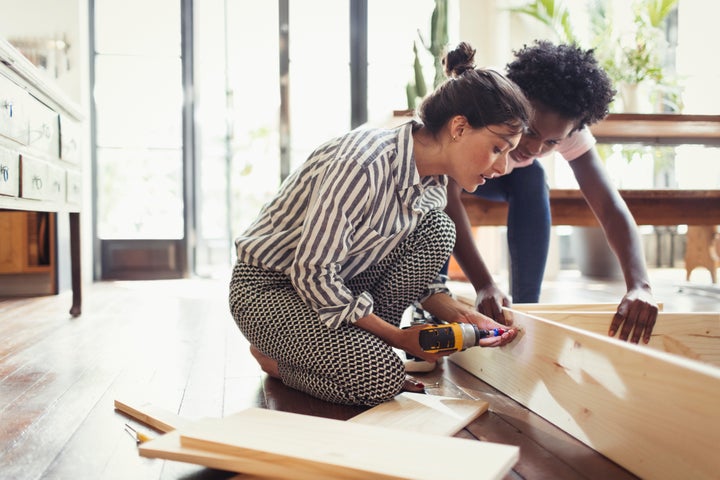The world of DIY can be a confusing place, full of strange words like architrave and screed. And, when something goes wrong at home, no matter how small, it can be tempting to call in the experts. But why spend money when you might be able to fix the problem yourself?

“Lots of people avoid DIY through fear of getting it wrong, of making a costly mistake, and of getting ripped off when you have to get that mistake fixed,” says Jo Behari, DIY expert and author of The Girl’s Guide to DIY. “Time’s a big factor, too—it’s quicker to get someone in than learn to do something yourself. But being able to look around your house and think, ‘I did that’ provides a lot of pleasure.”
From the right tools to use to what jobs to avoid, here are the experts’ top DIY tips.
Brush up
There are endless resources out there for wannabe DIY ninjas. “If there’s a job you think you might be able to do, it’s worth taking a look at a YouTube video first, to see if it’s something you might be comfortable with,” says Jo. Online tutorials are plentiful, and the big hardware stores all have advice on how to DIY. Home courses such as Skillsology’s DIY Home Improvements are also available, while evening classes offer hands-on experience.
“Taking a class gives you the knowledge and confidence to do DIY yourself,” says Simon Bessell, director of The DIY School. “One huge benefit is that your time is free, so once you’ve got the skills, you can achieve the same, if not better, results as a tradesperson who has to get the job done quickly.”

Be prepared
“People don’t seem to buy tools until they need to do a DIY job, then they have no idea what to buy and how much to spend,” Jo says. “When something needs fixing now, you don’t want to have to invest in tools, learn how to use them then learn how to do the job.”
The solution is to get yourself a basic toolkit as soon as you move into your first home, so you’re ready to tackle small projects. And, adds Simon, it pays to invest in the best. “‘Buy cheap, buy twice’ is very true when it comes to DIY. People assume buying cheap materials is OK—but they simply aren’t as good, and can cause huge problems if they let you down.”
“A particularly useful skill is learning how to use a drill,” Jo adds. “Once you crack that, you can put up notice boards, pictures, shelves, towel rails… It opens up a whole world of DIY that can make a real difference to your home.”

Tackle the basics
We all know how to change a lightbulb (right?) But there are a few other skills Jo says should be in every homeowner’s DIY repertoire.
1. Find your stopcock
“Every homeowner and tenant should know where the stopcock—which shuts your water off at the mains—is located. If there’s a leak, it can limit the amount of damage done.”
2. Clearing the drains
“This should be done regularly, and doesn’t involve any tools. Just put bicarbonate of soda down your drains and flush it through with vinegar every two to three months to clear out build-ups of grease and hair.”
3. Bleeding radiators
“If you hear gurgling in your pipes, it means there’s air inside that needs to be extracted by bleeding your radiators. But if they’re hot at the top and cold at the bottom, it indicates a build-up of sludge that a plumber will need to sort out.”
4. Increasing your boiler pressure
“This should be between one to two bars—if it drops lower than on bar, your boiler will struggle to function properly. Google the name of your boiler, and you’ll find instructions on how to repressurise your model online.”
5. Draughtproofing
“This one is super-simple, and can save a lot of money on heating bills. Seal gaps in your windows and doors by cleaning them with sugar soap, drying thoroughly, and fitting self-adhesive foam or brush strips.”
Leave some jobs to the experts
There’s a huge difference between putting up a shelf and rewiring your lights. “You shouldn’t attempt anything to do with electrics yourself,” Simon warns. “It’s crucial to know how to turn the power off, how to isolate it, and how to test it properly to make sure it’s safe.” And if your problem has anything to do with gas then, says Simon, it’s not DIY. “You can check grease and dust isn’t building up around your boiler, but only a qualified gas engineer should touch it.”